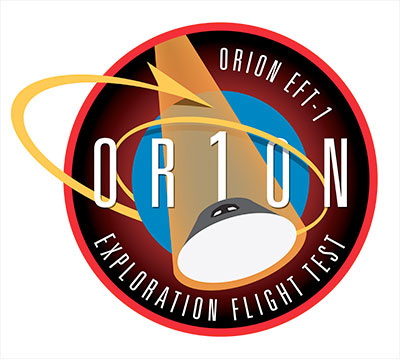NASA knocks it out of the park with Orion's EFT-1

As I write this, recovery teams are preparing the Orion EFT-1 spacecraft for recovery by USS Anchorage after a successful flight test of the U.S.'s next-generation crewed space vehicle. EFT-1 launched flawlessly this morning on a Delta IV Heavy rocket. She flew around the Earth twice, using the Delta upper stage to boost the second orbit to an apogee of about 3600 statute miles (3100 nautical miles, 5800 km; details in NASA's EFT-1 press kit). This distance is more than 13 times the altitude of the ISS at apogee, and much, much higher than the space shuttle ever flew. In fact, this is the farthest any crew-capable American spacecraft has flown since Apollo 17, the final American lunar mission. EFT-1 flew two days short of the 42nd anniversary of Apollo 17's launch (Dec. 7, 1972). For some perspective, the Wright brothers successfully flew an airplane for the first time on Dec. 17, 1903 at Kitty Hawk. The first uncrewed Apollo mission, AS-201—Apollo's equivalent of Orion's EFT-1--flew on Feb. 26, 1966. EFT-1 flies on Dec. 5, 2014. It took just over 62 years for us to go from the first airplane (little more than a glider) to the first moon-capable spaceship. It took nearly another 49 to build the second such spacecraft. This speaks to Project Apollo's towering achievement--it's really no wonder so many Americans refuse to believe it wasn't a hoax.
This mission took Orion so far from home because it needed a reentry velocity approaching what spacecraft returning from the moon would have. A primary objective of this mission was to test the heat shield, which is a combination of the ablative concept used in Mercury, Gemini and Apollo and the tile concept used on the shuttle. Tiles cannot handle the heat loads generated by spacecraft returning from space beyond Earth orbit, which must come in much faster than the shuttle flew. Apollo's heat shield worked brilliantly at those velocities (no Apollo astronaut was ever lost during flight), which explains the return to the "older" technology. (Although older and designed much earlier, the Apollo-Saturn spacecraft was in many ways much more capable than the shuttle.) Since Orion is, as I write, bobbing in the Pacific at Stable One (in an upright attitude), the primary mission test was obviously successful.
